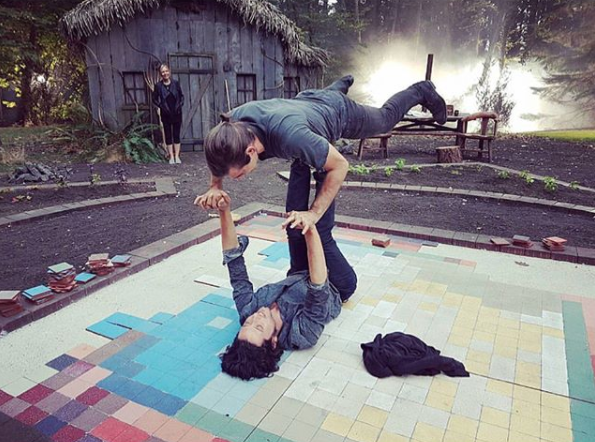
When it comes to the shows that hog all the attention in our era of peak TV, The Magicians is nowhere near the top of the list. Mainstream conversations about fantasy TV are often limited to the wild success of Game of Thrones, and The Magicians is nestled into an underrated corner of TV on the Syfy network. It’s easy for any series to get a little buried when there are 500+ shows and the Stark family around. But if we’re judging on ambition and inventiveness, The Magicians is one of the most notable shows on television — and its third season, which wraps up this week, proved that point over and over again. It’s a show that plays with story convention so consistently it blows up any boundaries that might hold it back.
Technically, The Magicians is built on the familiar. Based on Lev Grossman’s book series of the same name, the show began in 2015 as a sort of advanced-age Harry Potter meets Chronicles of Narnia. Unlike Hogwarts, the Magicians’ magic school — Brakebills — serves grad school students instead of children. When the characters discover and eventually become kings and queens of Fillory, their own version of Narnia, the escapist world operates as a Technicolor meditation on what it means to embrace adult responsibility. The series is also a direct descendant of Buffy the Vampire Slayer: It follows a group of ragtag young people as they repeatedly try to save the world. The characters fight through depression, sexual assault, addiction, and the general sense that things may never get easier. That’s all classic, well-trod territory. Which makes it all the more impressive that The Magicians inspires the feeling that it’s doing it all for the first time.
Here are just a few of the elements that make it stand out.
It’s one of the best ensemble shows about a group of twentysomethings.
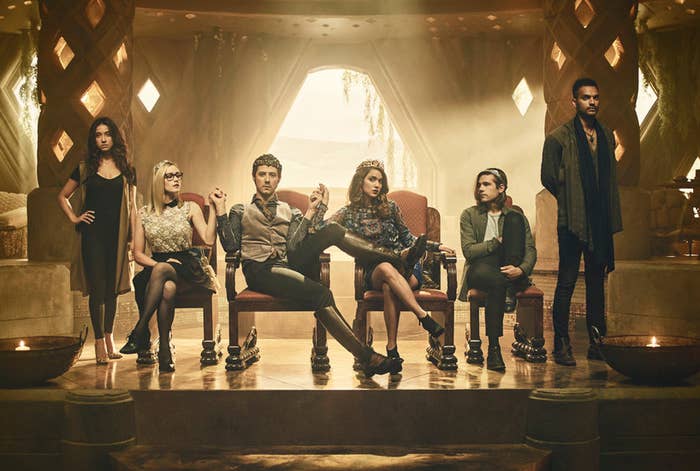
The Magicians has always had a stellar cast of characters on its side — a group of friends brought together via Brakebills and overlapping heroes’ journeys. They’ve fought moth-faced villains and conquered gods, each character an integral part of a larger and pretty magnificent whole. Eliot (Hale Appleman) has a palpable regality in both his look and his soul; Margo (Summer Bishil) has blossomed as a brazen queen; Quentin (Jason Ralph) is steadfast and earnest, buoyed by Ralph’s deep pleasantness, an energy that’s completely transformed the character from what he was in the books. And that’s only the tip of the iceberg — Julia (Stella Maeve), Penny (Arjun Gupta), Alice (Olivia Taylor Dudley), Kady (Jade Tailor), and Josh (Trevor Einhorn) are all worthy of their own odes. In a strange way, through them, The Magicians sits right alongside Insecure, New Girl, and Girls — it’s a sexy ensemble show about a twentysomething friend group. They muse on responsibility and the big life decisions you’re forced to make as you become a true grownup. They just do so while having hoversex, battling literal manifestations of their depression, and trying to run a kingdom or two.
And it has the kind of diversity that so many of the shows it riffs on lacked.
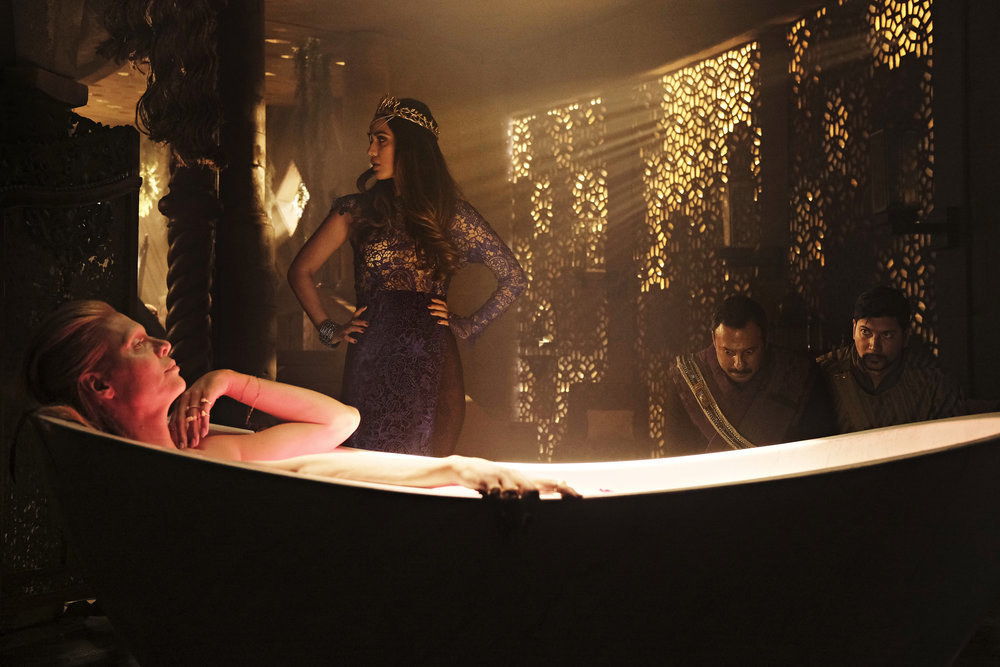
Beloved as Buffy may have been, it was also notoriously white. The Magicians, on the other hand, very much lives in a socially conscious 2018. A significant portion of its main cast is made up of people of color. Not only that, but every single one of them — from Maeve’s Julia, to Gupta’s Penny, to Bishil’s Margo — is the kind of complex, specific character you won’t find anywhere else on television.
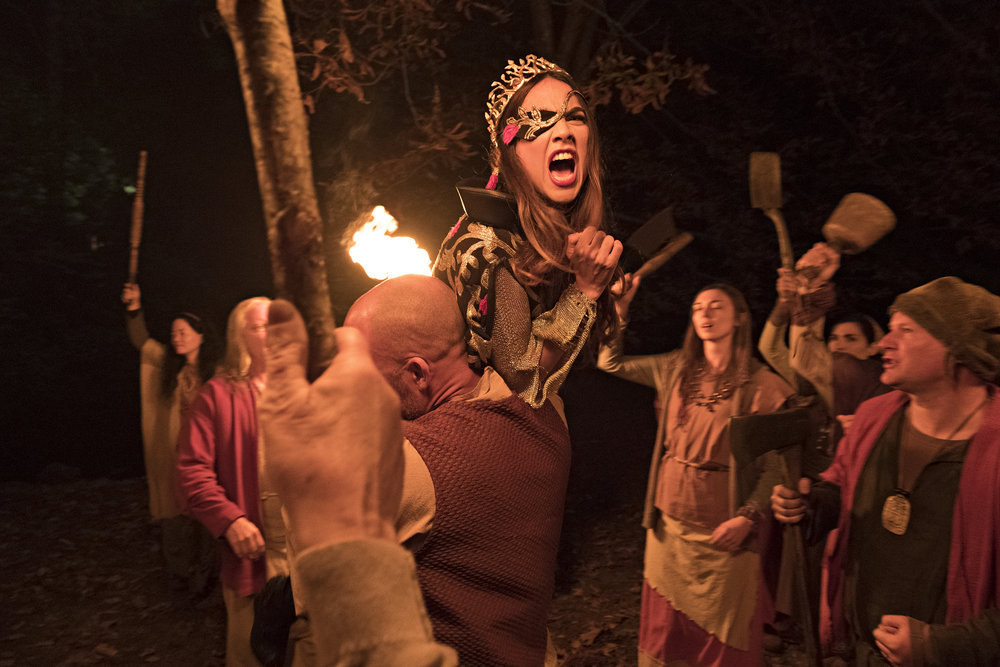
A sizable portion of the characters also appears to be sexually fluid. Quentin, who on most shows would be the straightest white man on the planet, has a threesome with a man and a woman. He hooks up again with that same man in a later episode. There are no coming-out storylines, no hemming and hawing about labels — intimacies just happen to manifest in all types of ways on this show. On the one hand, there are always downsides to a lack of labels, including perpetuating the erasure of orientations like bisexuality. On the other, it’s kind of freeing to watch a show where it’s genuinely possible that anyone could sleep with anyone else and everyone treats that pretty casually. It goes well with part of what makes The Magicians so fun to watch: It actually does feel like anything could happen. The story options are wide open when everyone’s at least a little bit queer.
The Magicians’ third season has also heavily featured Candis Cayne, a trans actor who previously broke ground with her role on Dirty Sexy Money — the first time a trans actor had a recurring role playing a trans character on primetime television. Here, she plays the Fairy Queen, an intimidating force and a standout of the season. Another standout: Marlee Matlin’s Harriet — a deaf actor playing a deaf character who gets a beautiful moment in the spotlight with Season 3’s “Six Short Stories About Magic.”
What’s more, most of the show’s inclusivity goes unremarked upon on the show itself. Race, gender, and disability aren’t invisible to any of the core characters, but neither are they the focus. Characters will call out white supremacy and sexism without the show bragging about having a queen (and king!) of a magical realm be played by an actor of Mexican, Indian, and European heritage. Or a black man as the king of their neighboring kingdom. Or a mixed Native American woman on the path to becoming a goddess. And so on. Which is not to say The Magicians shouldn’t brag — if they want to spend all of Season 4 bragging about their magnificent ensemble, that would work too.
The show has a true sense of playfulness.
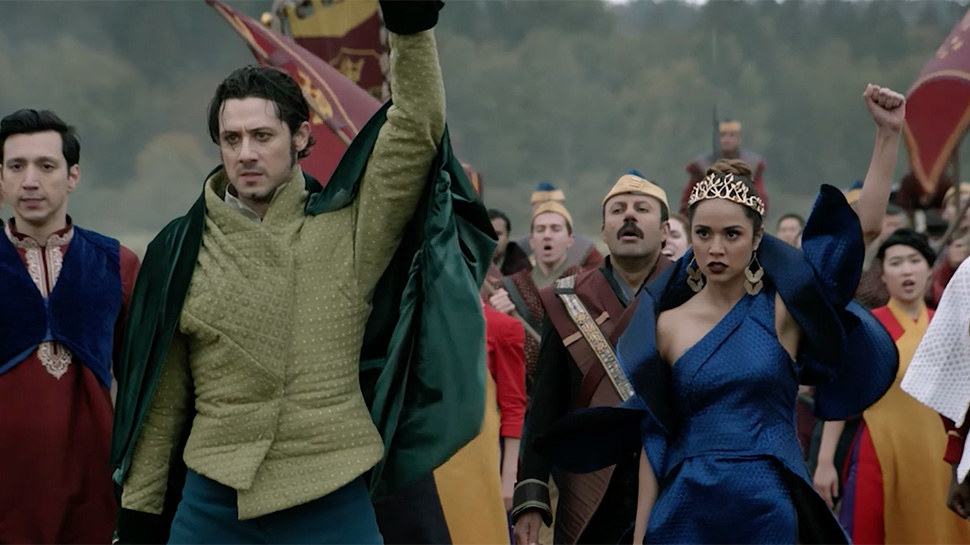
When Buffy aired its iconic musical episode in 2001, it had a ripple effect. Scrubs, Grey’s Anatomy, Psych, That ’70s Show, and even 7th Heaven all turned themselves into musicals for an episode. The Magicians, for its part, has been following in those same footsteps since its first season. Only instead of just one designated episode, they’ve peppered musical numbers into every season so far. In Season 1, Quentin sang Taylor Swift’s “Shake It Off” while trying to break out of a spell that had him trapped in a psychiatric hospital. “One Day More” from Les Misérables made a magnificent appearance in Season 2, as Eliot prepared for a duel to save his kingdom. (That one resembled what Game of Thrones might look like if Game of Thrones liked to party.) And this season, The Magicians did finally designate a full episode to several numbers. It culminated in the show’s main ensemble joining together in a rousing rendition of “Under Pressure.”
Integrated throughout the show, these moments stand as a declaration: This is just what The Magicians is, at its core. These scenes aren’t just an aside, a whim to break through the mundanity for a single episode — though The Magicians is also very good at that. With this show, narrative is twisted like a rubber band and then flung across the room. This is a series where talking sloths serve as top political advisers, party gods get banned from Instagram for posting too many shots of nipples, and messenger rabbits say things like “eat my ass.” It’s a blast.
And the fun they have with the story will also punch you in the heart (in a good way).
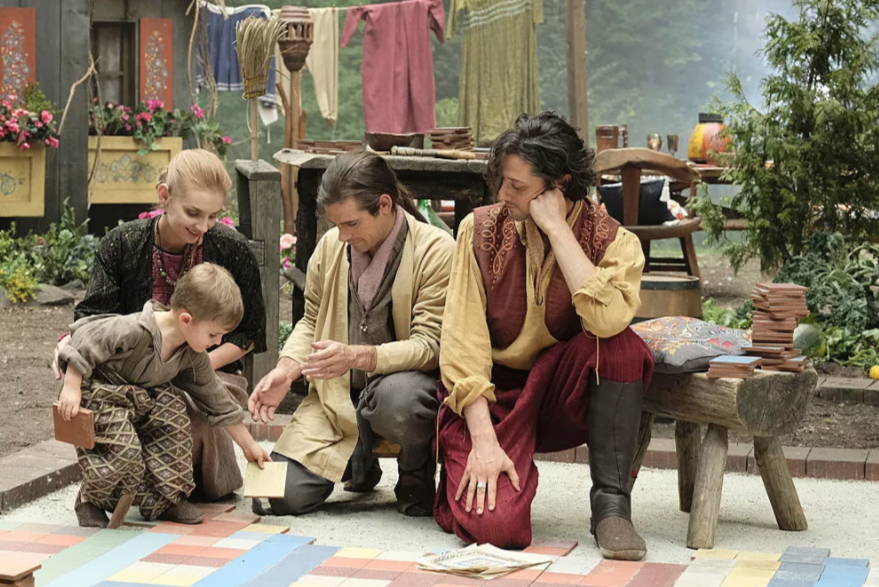
Wrapped up in all of its magical elements, The Magicians also happens to be wildly convoluted. Here, though, it’s at least in a way the show seems to truly delight in. As things grew more complex in Season 3, every week felt like the writers were taking the series’ classic fantasy tropes and conducting science experiments on them. Sometimes the effect is that aforementioned playfulness. But their characters are still on a variety of heroes’ journeys — which means this show is also willing to rip your heart out and tap dance all over it. Honestly? It feels great.
If there was one shining highlight of the season — and the show overall — it was the Feb. 7 episode, “A Life in the Day.” In it, Quentin and Eliot are tasked with completing a mosaic puzzle as part of a season-long quest to bring magic back to their world. To do so, they have to travel to a past version of Fillory. But unable to leave until they complete their mission, they wind up staying in the immediate vicinity of that puzzle for…well, the entire rest of their lives. The show plays this out in an extended montage. The two grow restless. They fight, they bond. They hook up. Quentin meets a local girl, settles down, has a son. When she’s gone, Quentin and Eliot spend the rest of their lives raising the kid and growing old together. Like the opening montage of Up, it’s the kind of sequence that really hits you with everything that it means to be human. It stays with you.
By the end of the episode, Quentin and Eliot had completed the puzzle and found their way back to their youths and their usual timeline. But the show made sure the impact of their time together was felt. These two characters had lived out an entire life as loving partners, side by side. It was an emotional beat that packed a hell of a wallop, and payoff has been sprinkled through the episodes that have followed. Sometimes it’s in small asides between the two characters; sometimes it’s just in knowing the way they look at each other. It’s hardly the first time characters in a genre show have lived out their entire lives in a separate timeline. But “A Life in the Day” was indicative of what The Magicians does best: It uses its magical setting and all-star cast to mold itself into different forms. Sometimes, like in that episode, it knocks you off your feet in the process.
In another episode, called “Six Short Stories About Magic,” the narrative is split into six vignettes sorted by character. The final one is centered on Harriet, a freedom of information activist and magician who runs a BuzzFeed spoof called FuzzBeat (hi, guys!). As Harriet is deaf, 10 minutes of the episode take place in silence. The segment includes some long-awaited exposition into Harriet’s backstory, which we get through her perspective before the series explodes back into sound in its final moments. The effect is stirring.
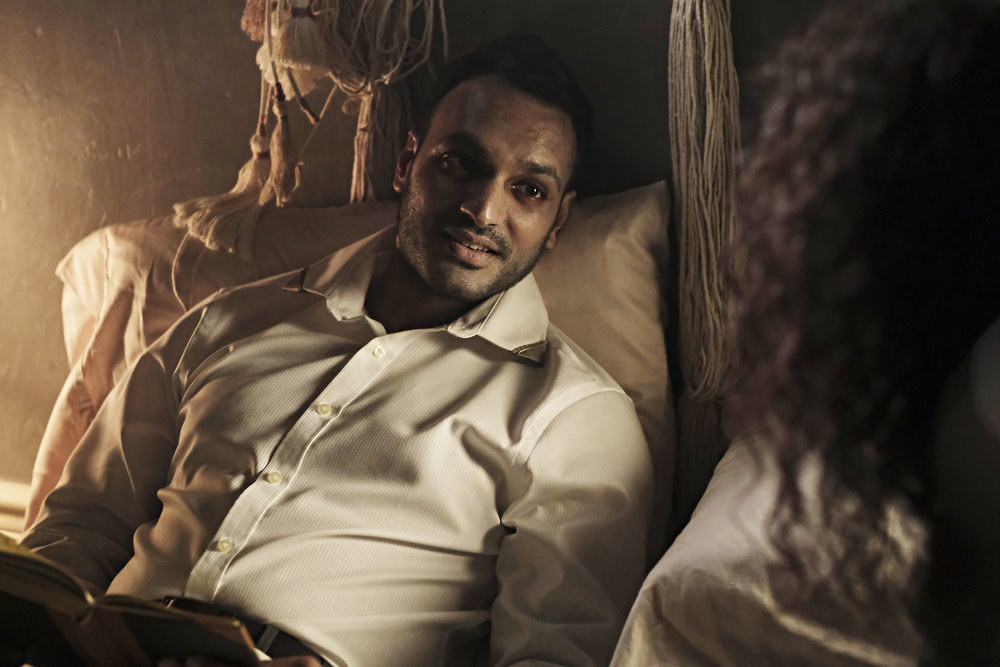
In “Be the Penny,” we get another play on perspective as Penny finds himself separated from his body with his friends believing him dead. We spend the episode with his astral self, watching people react to his death as he tries desperately to contact them. In both of these, the show plays with form to reveal depth. Penny doesn’t get a normal death, so it follows that the episode focusing on that would be just as off-kilter as the story itself — and just as sad. Penny watches his friends grieve, though not always to his satisfaction, and he can’t reach them to tell them that he’s still there.
This kind of experimentation is not new to fantasy. Supernatural, in its seemingly 500th year on television, has employed practically every genre and meta twist there is. Most recently, the characters crossed over with Scooby Doo and literally became animated. And Buffy was groundbreaking in this field before that, not only for the aforementioned musical episode but also for forays into silent filmmaking with “Hush” and character experiments like “Tabula Rasa.” One of the joys of sci-fi and fantasy is that it gives you a built-in excuse to fuck with convention. The Magicians has reveled in that from day one — and from the ground up. And with this third season, it took itself to a whole new and thrilling level.
